Blake Ketchum is JUST the kind of polymath we need in this epoch of science denial. The eco-entrepreneur has a PhD in soil science, a master’s degree in forestry, and a bachelor’s in visual arts. She lists JavaScript, web development, and e-commerce alongside forensic reconstruction and native plant ecology as skill sets on her resume. Oh, and she’s an accomplished artist–a sculptor who specializes in portraiture with commissions from Yale, Cornell, and the International Special Olympics. With her understanding of diverse disciplines, she can make the complex premises and processes of science understandable to the rest of us.
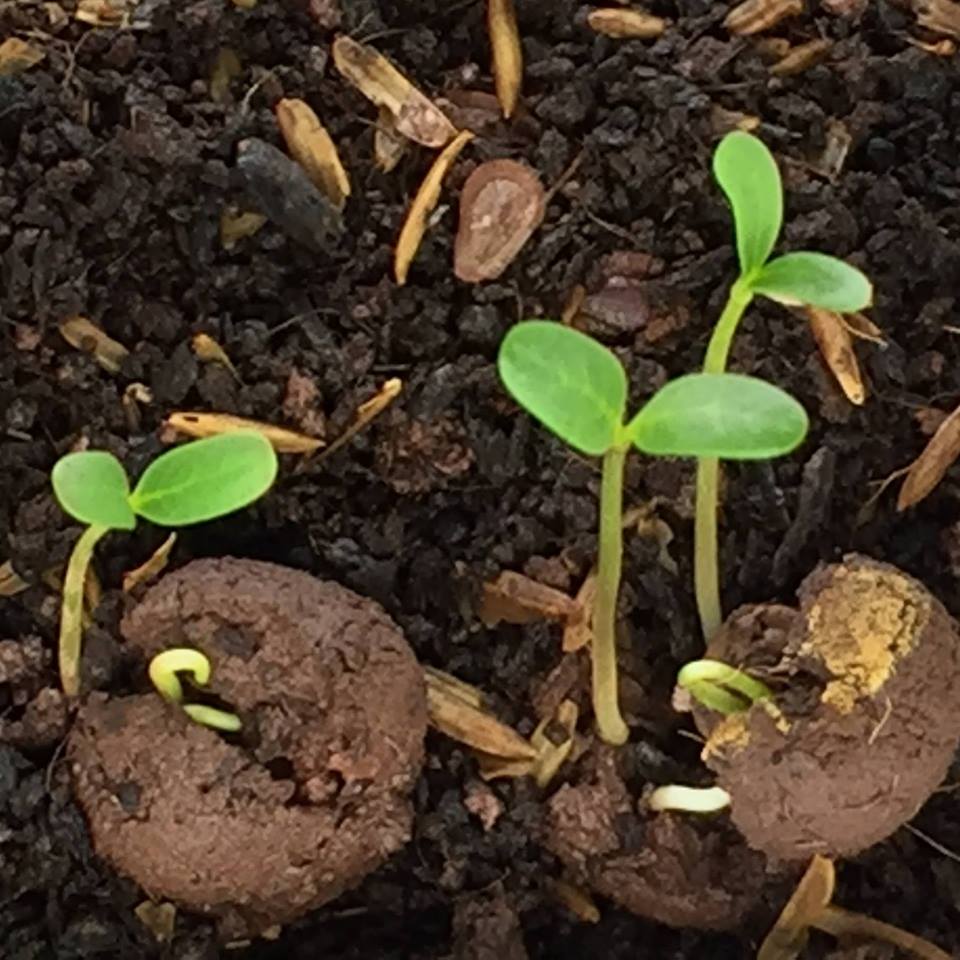
Seed balls: It’s more complicated than ” throw and grow,” says Ketchum. Photo courtesy Seed-balls.com
One of her most effective platforms is Seed-balls.com, a conservation start-up she launched in 2013 with her teenaged son. Its mission: biodiversity through green business. “Educate people. Disperse seed. Be green.”
I caught up with Ketchum recently in the course of updating my annual post on seed balls. My research led me to the Seed-balls.com website where she and her small band of “mudslingers” evangelize and educate on the wonders of seed balls, tidy germination bombs which have the potential to transform vacant lots, degraded fields and blank areas in your vegetable garden.
I sought Ketchum’s expertise out of frustration. For a decade I’ve been making and dispersing seed balls, but have had very little success. Every autumn I collect local, native seeds from our property, throw them in a paper bag and save them for a seed ball party. Friends who don’t mind muddy hands help fashion hundreds of seed balls. We’ve thrown thousands of them on our family’s Llano River ranch over the years in an attempt to restore overgrazed pastures to former glory as prairies. We’ve also spent a substantial sum on native seeds broadcast directly onto the soil.
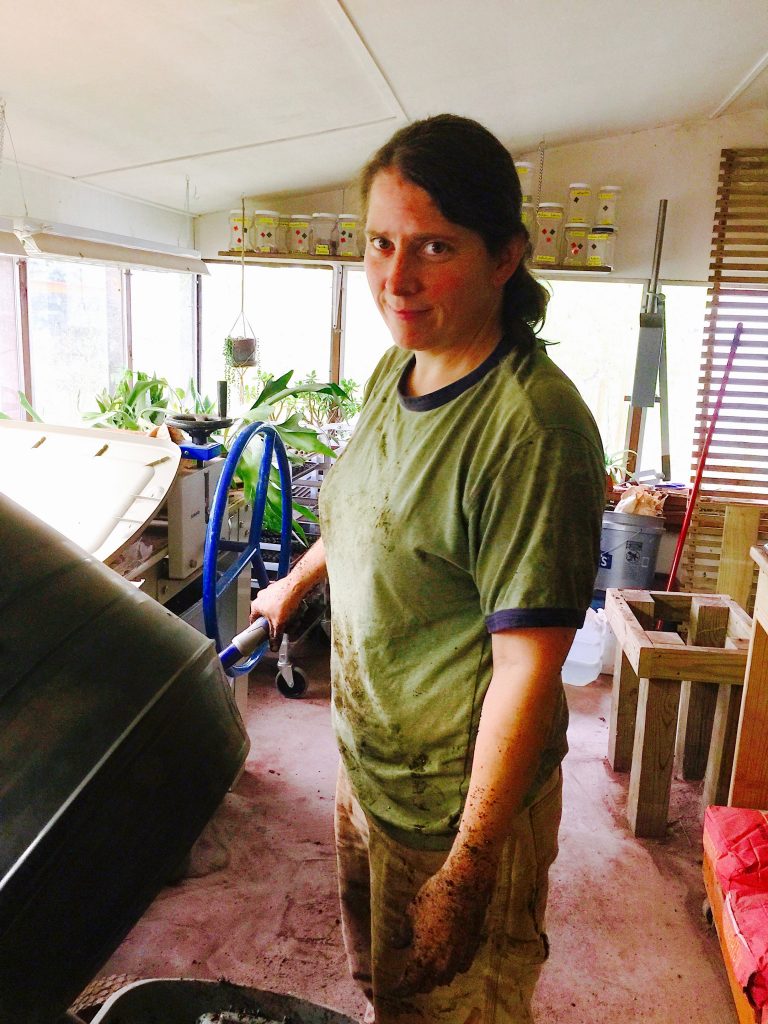
Polymath Blake Ketchum works her magic making seed balls. Courtesy photo
My experience: seed balls do not live up to their hype. Our singular success has been in the Chigger Islands which dot our stretch of the Llano River. There, we’ve thrown many Swamp milkweed, Asclepias incarnata seed balls. A handful have grown into robust milkweed stands.
Yet the hands-on activity of molding soil, clay, seeds and water into seed balls has been touted as an effective way to plant wildflowers in hard-to-reach places. The act of tossing seed balls is often referred to as guerrilla gardening since you can plant flowers or edibles on property not rightfully yours. Seed ball making has also become increasingly popular as an activity at conservation and environmental events in recent years. Kids of all ages love getting their hands dirty while learning the importance of native plants and pollinators.
So, what am I doing wrong?
Apparently, not managing my own expectations. Tweaks to the seed ball recipe can help, says Ketchum. Adding mycorrhizal fungi or worm casings also boosts success rates. But Ketchum soberly explains that seed balls actually are better as an engagement tool than as tactical conservation. Throwing wildflower seed balls into an established landscape will likely not result in success. “Wildflowers are typically NOT fierce competitors and are easily outcompeted by weeds and turf grass,” says Ketchum.
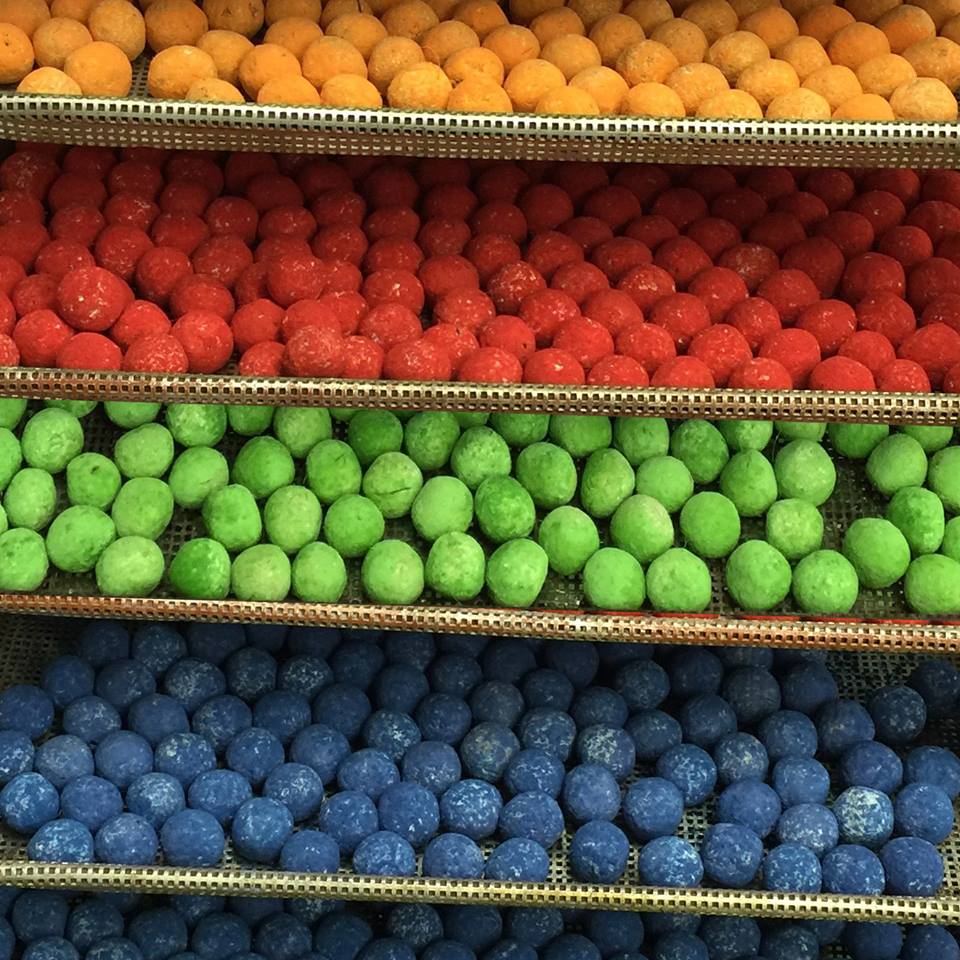
The mudslingers at Seed-balls.com will make custom orders from specific seeds. Color coordinated, too. Courtesy photo
That shouldn’t stop us from making and throwing seed balls, however. “Conservation is a multifaceted endeavor,” she says. “One part is transforming landscapes, another part is educating people about what that takes and getting people excited and enabled. Seed balls are really good at that.”
Read more of Ketchum’s insights on seed balls, below.
Q. What is the primary reason seed balls don’t germinate?
Ketchum: They are planted at the wrong time of the year. We see this a lot with milkweed. Well-meaning gardeners plant it in the spring assuming it will sprout. However, milkweed needs several months of cold, wet weather before it will germinate.
They are planted too deep. Seed balls should be pressed halfway into the soil so that they can get plenty of sun and moisture.
They are planted in the wrong location. Sometimes they are planted in the wrong climate or in the wrong landscape position. It’s important to know what plants are native to your region and where they like to grow.
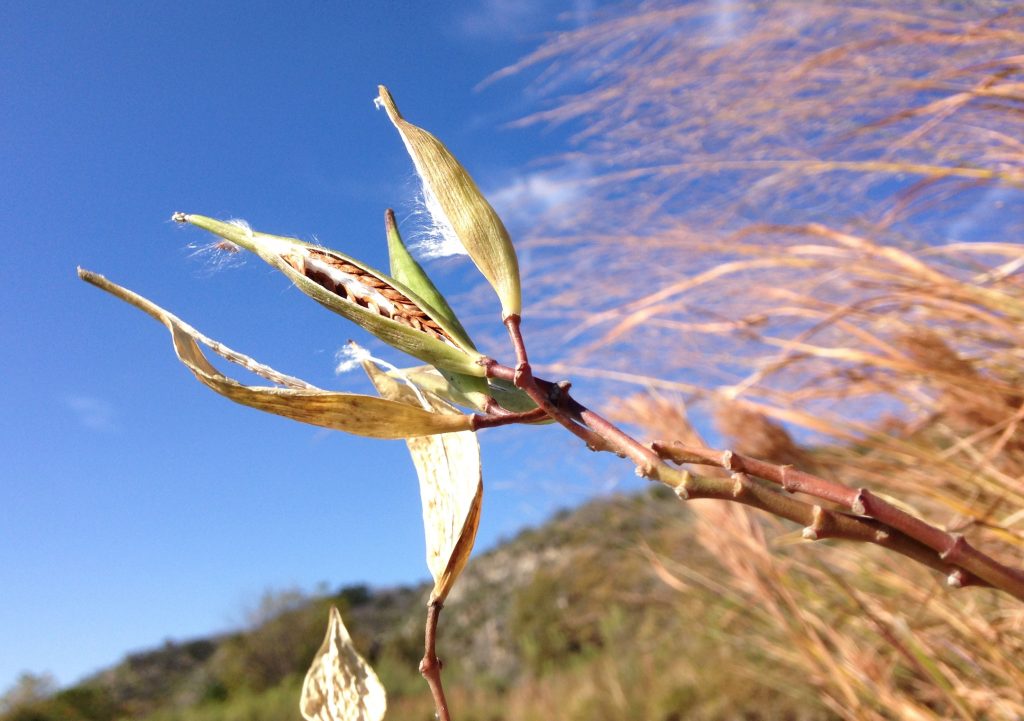
Swamp milkweed pods, Asclepias incarnata, ready for harvest on the Llano River. We’ve made plenty of seed balls from these. Photo by Monika Maeckle
The seed balls are over-compressed and do not break down. Seed balls should disintegrate, allowing the seed to make contact with surrounding soil. If not, the seedlings can’t break free from the seed ball and will die.
The seeds were placed inside of the seed ball. Many seeds require sunlight to germinate and if they are placed on the inside of the seed ball, they will not grow.
The compost may not be sufficiently aged or the pH may not suit the seeds.
Q, Any tips for amateur seed ball makers/throwers?
Ketchum: Do your research. Select the right seeds for your region and landscape position.
Manage your expectations. Seed balls planted where they can be cared for will do better than seed balls left to survive on their own. Many seeds need to stay moist throughout their germination. If left without rain or regular watering, they will die.
Avoid the ‘Throw & Grow’ Myth. Seed balls thrown into neglected landscapes will not likely survive. In these locations, seedlings are forced to compete with established and nonnative plants. For the best results, clear the area of competing plants, and press your seed balls halfway into the soil.
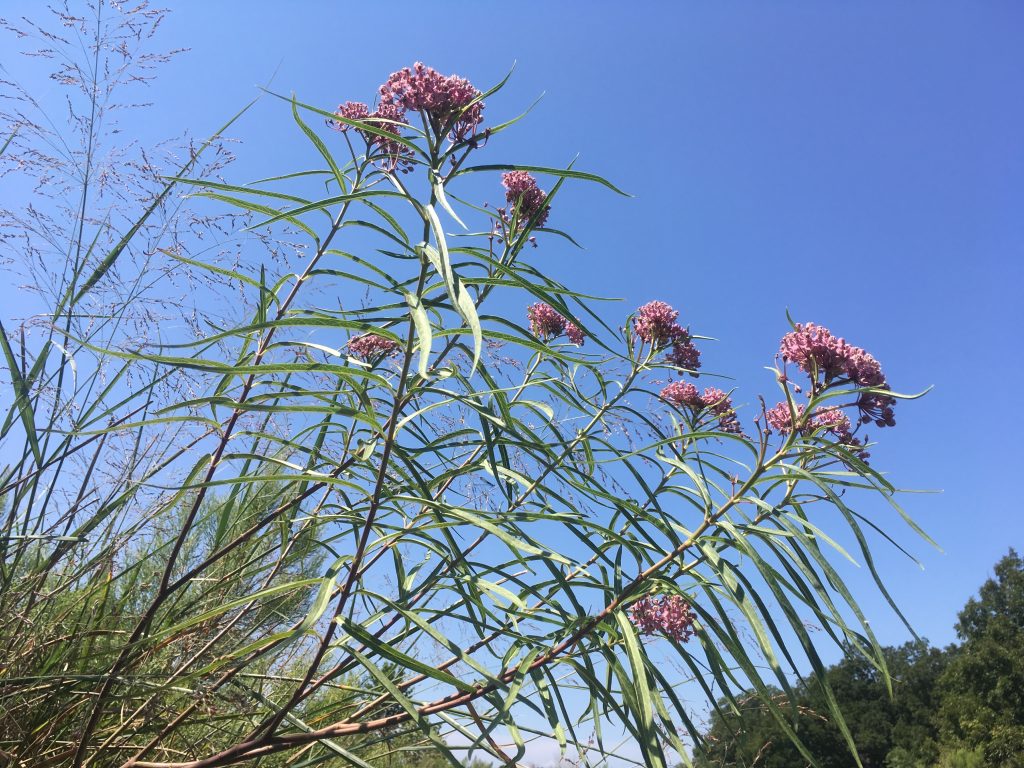
Swamp milkweed in full bloom, late summer. Thanks, seed balls! Photo by Monika Maeckle
Q. It seems seed balls have really taken off in the last few years. It used to be such a fringe thing. To what do you attribute that?
Ketchum: Seed balls are a fun, accessible introduction to gardening. They are easy to market and companies like ours and our competitors have done great work educating the public about Guerrilla Gardening and the need for native wildflowers.
We do a lot of work with wholesale companies whose businesses are driven by Millennial customers. As the fastest growing population in the US, this generation is shaping trends. What we have learned from these companies is that millennials care about saving native pollinators and they want to be good stewards of the planet. Seed balls give millennials a way to do both.
Q. The Ladybird Johnson Wildflower Center says they’re really not effective for large-scale restorations. Would you agree?
While seed balls are a great introduction to native wildflower gardening, they are not an effective strategy for large-scale restoration projects. They require a sizeable investment of both time and money. Buying seed is a more effective and affordable option. We recommend conservation seed companies like Native American Seed or Ernst Conservation Seeds. They can help you select regionally appropriate species, as well as provide restoration advice to help achieve your restoration goals. Because restoring disturbed landscapes is nearly impossible, it’s important to be smart about your project.
More posts like this:
- Winter Solstice suggests it’s time to make seed balls–here’s how
- Q & A: Dr. Anurag Agrawal challenges Monarch butterfly conservation conventional wisdom
- Q & A Journey North’s Elizabeth Howard talks tech, citizen science and mass butterfly releases
- Fungus among us: Wildroot Organic praises the magic of mycorrhizal fungi
- Guidance on milkweed management confuses butterfly gardeners
- Late season Monarchs create gardening quandary
- What to do with late season Monarchs
- Tropical Milkweed: To Plant it or Not is No Simple Question
- Oh Those Crazy Chrysalises: Caterpillars in Surprising Places
- Butterfly FAQ: Is it OK to Move a Chrysalis? Yes, and here’s how to do it
- Should You Bring in a Late Season Caterpillar into Your Home?
Like what you’re reading? Don’t miss a single post from the Texas Butterfly Ranch. Sign up for email delivery, like us on Facebook, or follow us on Twitter, @monikam.

May I share this on facebook with credits of course?
Of course!
I’m very much interested in seed balls, and have been for many years.
Dr. Ketchum on one hand supports using seed balls, but on the other she also states that in order to be successful, one criterion is management. Doesn’t that defeat the purpose of seed balls? Wouldn’t it be easier then to take seed, plant them at appropriate times and at correct landscape positions, etc.? That way, one hurdle to germination by not having to have the seed ball melt, is eliminated. If they should be pressed into the soil and then managed for greater success, why go through all the trouble of making them?
I’m not dissing her statements: just wondering about the effectiveness of guerilla bombing seed balls and why the need to make them in the first place if one is going to manage them.
Omg I was thinking the same thing. Did you ever get a good answer to this question?
With respect !!!
Actually, they will work in places where you don’t need them, but will almost never work in places you do. More often than not, people are encouraged to throw seed bombs into vacant lots, abandoned industrial sites, roadside verges and medians, grassy wastelands, and trampled playgrounds.
hello
i am from kutch gujarat country india
in my district rain is not to much in monsoon may be 30 to 35 inch average and after that in summer temp. rise up to 45 percentage my question is if i make seed ball and i use it here what is the chance of success please guide us this technic is very fast and cheap and can cover all my district is it possible to get small success hear
thank you
Hard to say but give them a try and experiment. Good luck! —MM